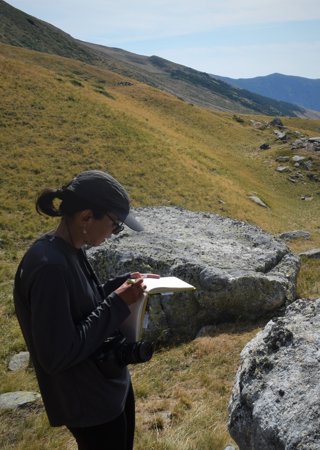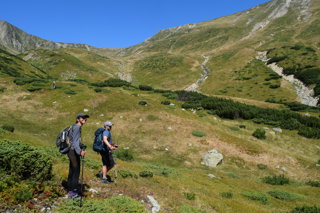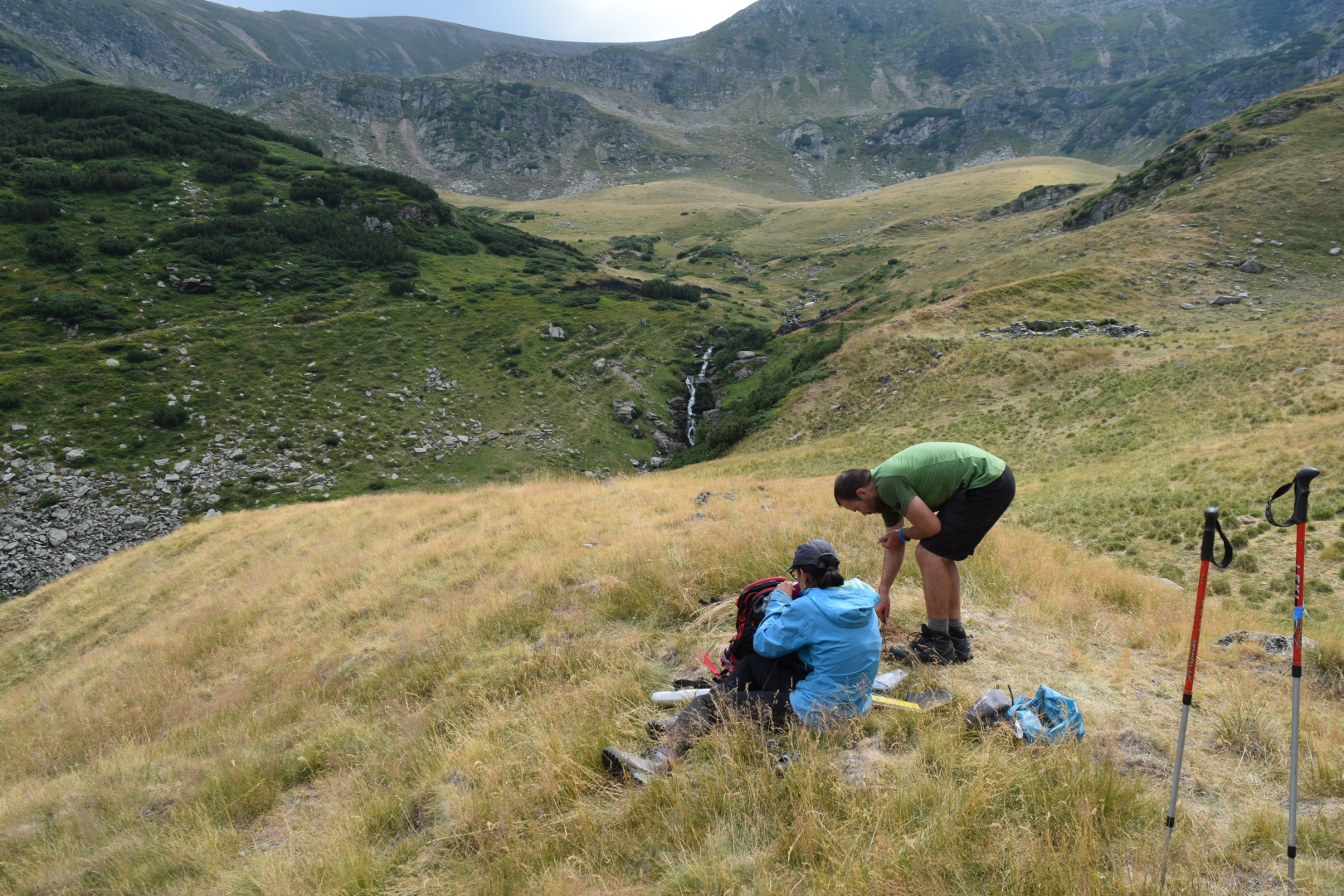Reconstructing the history of past glaciers can provide important insights into glacier-climate systems. Cristina Balaban, PhD student at Durham University, aimed to discern the competing influence of wind directions and topography in controlling past glaciation in the Southern Carpathians, Romania, to help inform projects of future glacier and climatic change. We caught up with Cristina to find out more about her research and fieldwork.
What is the background and wider content of your research?
Understanding the past behaviour of mountain glaciers is key in deciphering the climate conditions under which they operated. In turn, such knowledge is vital in predicting how present mountain glaciers might behave under future climate change. Reconstructions of past glaciers have widely been undertaken in mountain ranges situated in wet and dry climates. However, little is known about former glaciations of mountains located in transitional, temperate-continental climates, such as that of the Southern Carpathians, Romania. Two hypotheses have been posed by the few studies published in this region: one arguing that glaciation was driven by the westerly winds, and another emphasising the importance of Mediterranean cyclones feeding it. Therefore, re-evaluating these hypotheses becomes important in understanding past atmospheric changes in the region, upon which future predictions can be made.
What questions did you set out to answer and how?
My project sets out to reconstruct the extent, timing and glacier dynamics in the Southern Carpathians, Romania. The reconstruction of glacial extents involves mapping landforms indicative of ice extent (e.g., moraines and ice-moulded bedrock). Determination of the timing of past glaciation is achieved by applying dating methods (cosmogenic nuclides, Schmidt hammer, soil chronosequences) on these past extent indicators. Glacier dynamics are inferred from numerical ice modelling, using the field data as constraints. All these methods are applied on two mountain ranges located at different ends of the Southern Carpathians: the Godeanu mountains in the west, and the Iezer mountains in the east. The two mountain ranges are presently influenced by contrasting air masses, with the Godeanu being in a sub-Mediterranean climatic zone, while the Iezer is in a transitional temperate-continental one. However, the two mountain ranges share a similar geology (schists and paragneisses) and topography (flat and rounded mountain tops, surrounded by glacial cirques and U-shaped valleys). These are constant geographical characteristics that enable us to filter the past atmospheric circulation patterns more clearly.

Collection of a rock sample for cosmogenic nuclide dating and debating its mode of deposition, Vlăsia Valley, Godeanu Mountains.
What are your main findings to date?
As the project is still in progress, at the time of writing, geomorphological maps are being produced. This is following data ground-truthing and collection over a six-week field season in the two mountain ranges, which was partially, but generously funded by the Society through a Dudley Stamp Memorial Award. A main finding would be the confirmation of the existence of former glaciers in these regions – plenty of depositional (e.g., moraines, erratic boulders) and erosional (ice-moulded bedrock) landforms support this, indicating former glacier extents. A key challenge was differentiating between such glacial landforms and those of other origins, for example periglacial (e.g., rock glaciers) and paraglacial (rock slope failures). Through rigorous cross-checking with well established diagnostic criteria, it has been an exciting experience to debate potential origins and reach a conclusion – which can be either enhanced, or even debunked once I process my dating and modelling data!

Describing the geomorphological context and surface cover of glacial boulders for cosmogenic nuclide dating, Vlăsia Valley, Godeanu Mountains.
What will be the wider impact of your research?
The project is the first performed in the Southern Carpathians that will reconstruct the past glaciation of not one, but two mountain ranges, so that the past atmospheric circulation of the whole region can be understood. Our goal is to identify whether different air masses operated there at different times and locations, and relate those implications to past ice dynamics. More broadly, the findings of this project may be fed into General Circulation Models (numerical simulations of past atmosphere-ocean-ice-earth interactions) that are widely used in climate change projections. As such, the future behaviour of contemporary mountain glaciers – essential in providing water and mineral resources for many communities - may be understood and better mitigated.
Do you have a highlight from your fieldwork?
One of the many fieldwork highlights that has stuck with me was undertaking work alongside shepherds, their sheep flocks and dogs. Shepherding is an ancestral activity still taking place in the Southern Carpathians over the summer months. Sharing such a vast and steep terrain with company that calls it home was nothing short of fascinating – I was particularly impressed with the shepherds’ local knowledge and resilience, as well as their generosity (one of them shared locally-produced food with us as if we were their guests!). This has taught me that even the remotest environments can harbour humanity, and, despite our different backgrounds and occupations, we all bonded over our shared enjoyment of working in the outdoors.

Marvelling at the rich glacial geomorphology of the Vlăsia Valley, Godeanu Mountains.
What will you take away from your fieldwork and how will you use this going forward? What’s next?
My main take-home lesson from this field expedition is how to organise and lead one! Even though I have undertaken fieldwork as part of my previous undergraduate degree and other research experiences, I was never the person in charge of an expedition of this scope and scale. While the steep mountainous terrains and the volatile context of the COVID-19 pandemic posed their inherent challenges, I managed to overcome them all successfully, with the bonus of collected data for my PhD – however, none of it possible without the generous support of my co-fieldworkers, supervisors, colleagues, friends, family, and, of course, my funders (including RGS-IBG, Quaternary Research Association and Ustinov College, Durham University)! While there is still data to process ahead, namely the dating samples and ice modelling, the field expedition experience will keep me inspired in my research journey…and keep me yearning for many more in the future!
Christina's research was supported by the Dudley Stamp Memorial Award. Find out more about the full range of grants available to support students and researchers with their fieldwork.


